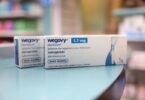Monitoring Desk
ISLAMABAD: With the fascination with Japanese and Korean skincare lessons starting to wane, a shift has taken place towards the realm of Ayurvedic skincare practices. Here are some new trends.
Ayurvedic medicine, an ancient philosophy aimed at restoring balance to mind, body, and spirit, has gained tremendous popularity worldwide.
Research indicates a growing demand for Ayurvedic beauty products, as more and more consumers seek out natural ingredients and revitalising rituals.
The journey into Ayurvedic skincare commences with the discovery of Forest Essentials, a highly acclaimed luxury brand in India.
Founded by Mira Kulkarni, the brand gained prominence through her meticulous handcrafting of soaps. The allure of their vibrant packaging immediately catches attention.
Moreover, the authentic scents evoke memories of visits to the spice markets in Delhi and the mystical, mist-covered landscapes of Darjeeling.
The Ayurvedic products are infused with sweet almond oil along with date extract, known for its antioxidant and soothing properties, and litchi (lychee) extract that open your eyes to their efficacy to enhance radiance.
Additionally, fenugreek seed which is another major part of the Ayurvedic trend provides anti-inflammatory benefits such as luxuriously smooth skin, especially when it is applied at night.
Kulkarni emphasises the belief that “skin is alive,” and beauty products should be crafted from “living” substances. Ideally, one would prepare fresh concoctions using seasonal ingredients and ancient recipes.
However, in our fast-paced world, Ayurvedic beauty products offer the next best option as some of these products incorporate sun-dried herbs, peak-potency hand-pounded flowers and blends.
In essence, Ayurveda revolves around the concept of five elements: air, water, space, earth, and fire.
These elements interact, giving rise to three “doshas” or life forces within the body: vata (air and space), pitta (fire and water), and Kapha (water and earth).
Ayurvedic practice suggests that each person leans towards a dominant dosha, which shapes their character and constitution, thereby indicating the best approaches for their well-being.
Regarding skincare, vata skin types tend to be dry, rough, and prone to premature aging, benefiting from regular deep nourishment and hydration.
Pitta skin, on the other hand, is susceptible to warmth and redness, thus responding well to cooling, anti-inflammatory ingredients.
Meanwhile, Kapha skin often presents as oily and lackluster, requiring purifying products for effective remedies.
In Ayurvedic beauty, rituals also hold significance. For instance, “abhyanga,” or self-massage with oils, not only keeps the skin supple but promotes inner balance.
Understanding one’s dosha can guide product choices, but according to Kulkarni, it’s not necessary to begin a self-care routine. Simply tuning into how the skin looks and feels will serve as a guide.
Ayurveda is a wonderful journey of discovery, transcending generations and cultures, and offering a profound philosophy for holistic well-being.
Courtesy: (Geonews)







